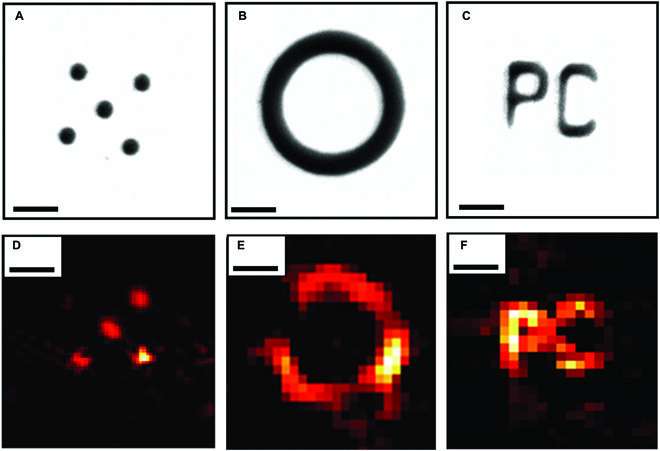This article has been reviewed according to Science X's editorial process and policies. Editors have highlighted the following attributes while ensuring the content's credibility:
fact-checked
proofread
Speckle-illumination proves useful in photoacoustic microscopy

Motivated by the limitations of scanning approaches to photoacoustic microscopy, an international group supervised by Emmanuel Bossy of Université Grenoble Alpes experimented with structured illumination using known and unknown speckle patterns. One of their experiments produced the first demonstration of the use of blind structured illumination for photoacoustic imaging through a diffuser.
The group's research was published Intelligent Computing.
The research article concludes that "photoacoustic microscopy can harness many of the structured illumination methods developed initially for pure optical methods such as fluorescence microscopy simply by replacing light detection with acoustic detection."
One type of structured illumination is speckle illumination, which looks just how it sounds. Speckle illumination belongs to a class of illumination patterns that seem random but can be described statistically. It can be generated using equipment that is cheaper and more flexible than the spatial light modulators needed to generate other types of structured illumination.
In biomedical applications, speckle illumination has two advantages. One is that spreading out and thus reducing the intensity of the illumination can reduce damage to the targeted tissue. Another is that, if the sample is sparse enough, the necessary measurements can be collected faster.
Some devices used for minimally invasive endoscopic surgery produce their own speckle illumination. Previous research suggested exploiting this illumination and demonstrated the principle with fluorescent microscopy, but not photoacoustic microscopy.
The authors hope to see more research in the area of photoacoustic microscopy as acoustic detectors become more sensitive.
In one set of experiments, the authors used three different popular methods to reconstruct photoacoustic images that were created using speckle illumination patterns. They used a correlation approach, a pseudo-inverse approach, and a compressed sensing approach for each experimental setup.
In one setup, they used an optical diffuser to create the speckle patterns. In another setup, they used a multimode optical fiber with a special fiber optic sensor attached. In both of these setups, they calibrated the equipment to collect data that could be used to reconstruct the image.
In another set of experiments, the authors relied on a phenomenon known as the optical memory effect, which allowed them to reconstruct the image without first calibrating the equipment. The authors believe the images produced by their blind structured illumination optical diffuser setup are the first of their kind.
Photoacoustic imaging, also called optoacoustic imaging, is a technique that measures sound emitted by the target when light is focused on it. The light heats the target, causing a temporary size increase that produces a sound wave.
Scanning implementations of photoacoustic microscopy require a sensor to observe every part of the target in a straightforward sequence. One drawback of this approach is that it can take a long time. Thus, researchers looked to optical microscopy for more efficient methods that might also work well in the acoustic domain.
In optical microscopy, the alternative to scanning is variously called single-pixel imaging, ghost imaging, structured illumination, or structured detection. What these methods have in common, in contrast to scanning methods, is a more sophisticated spatial sampling strategy that requires image reconstruction after data is captured. Previous research proposed and demonstrated that such optical microscopy methods can also be used for photoacoustic microscopy.
More information: Antonio M. Caravaca-Aguirre et al, Single-Pixel Photoacoustic Microscopy with Speckle Illumination, Intelligent Computing (2023). DOI: 10.34133/icomputing.0011
Provided by Intelligent Computing





















